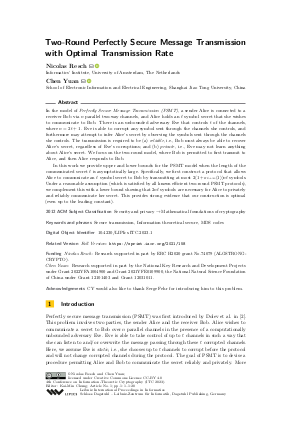LIPIcs.ITC.2023.1.pdf
- Filesize: 0.77 MB
- 20 pages

 Creative Commons Attribution 4.0 International license
Creative Commons Attribution 4.0 International license





Feedback for Dagstuhl Publishing